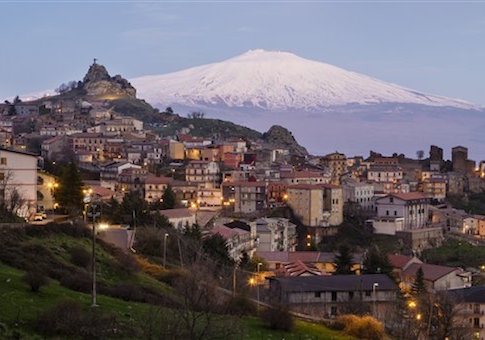John Norwich’s Sicily is the author’s "valediction" to a place he has visited many times, a book that blends history and travel writing.
Norwich’s account begins in the 8th century B.C., when the first Greek settlers landed "at Acragas (the modern Agrigento) and at Gela, where the first permanent Greek-Sicilian settlement was founded in 688 B.C." On the page following this historical account, Norwich becomes a happy travel guide—as he does frequently throughout the book. Discussing the beauty of the surviving ruins of these ancient settlements, Norwich notes that the "loveliest of all is Segesta, set in a fold of hills an easy drive from Palermo (but just out of sight, thank God, of the Motorway)."
Ancient Sicily was defined by invasions, and by the enslavement of the defeated in punishing limestone quarries. We read of the 38-year dictatorship of Dionysius I of Syracuse, followed eventually by Carthaginian hegemony, then, after the Punic Wars, the rule of Roman Republic. Through all of this, and through what followed, there was almost perpetual hardship for those who lived on the island, especially those unlucky enough to be held as chattel. In one slave revolt, following a surrender under false pretenses of pardon, the defeated rebels were shipped to Rome "to be torn apart by wild animals." According to Norwich, "rather than provide entertainment for the crowd, they all committed suicide or killed one another before the show began." A plaything for Rome, Sicily featured in the career of a certain Marcus Cicero, who was retained in 70 B.C. to bring to trial a particularly abusive governor named Gaius Verres. Cicero being Cicero, following his trial Verres went into exile.
The next occupiers were the Byzantines. The eastern emperors used the island as a staging post of increasing importance in their effort to re-establish power in the west. Then, in the 10th century, came the Arabs. Under their control, Sicily "became one of the major trading areas of the Mediterranean, with Christian, Muslim and Jewish merchants all thronging the bazaars of Palermo." But for all of the Arabs’ innovations in agriculture, law, and trading, stability in Sicily "was conspicuously absent."
Then, in the late 11th Century, came the Normans. Norwich explains that the Norman seizure of Sicily was "the first step in the immense Christian reaction against the Muslim-held lands of the southern Mediterranean … shortly to develop into the colossal, if ultimately empty, epic of the Crusades." For a time, Sicily benefited. Under the leadership of King Roger II in the 12th Century, Palermo became immensely wealthy and home to the "foremost scholars and scientists, doctors and philosophers, geographers and mathematicians of Europe and the Arab world." This tradition of learning was extended by Frederick II during the 13th century, but his reign was not without its human cost: Frederick repressed and ultimately expelled the island’s Muslims.
As global trade routes expanded, "men realized that, at least, from the commercial point of view, the Middle Sea [the Mediterranean] had become a backwater … and Sicily, as always was the loser." In the late 17th century, Sicily suffered a terrible earthquake that killed "almost two-thirds of the population of Catania, where Sicily’s only remaining university was completely wiped out." Recounting this tragedy, Norwich jumps into travel guide mode to offer a silver lining: "But even earthquakes can occasionally have their uses; and without the catastrophe of 1693, we should not have had three of the loveliest baroque towns in Sicily, towns almost entirely rebuilt after the devastation." The author then describes the particulars of these towns—Noto, Ragusa, and Modica. There is something undeniably endearing about this sort of writing: charm amid the ruins.
After a period spent caught between the French and British empires, Sicily became incorporated into the unified Italian nation, though of course not without yet more suffering. Then, in the 20th century, came Mussolini and the Mafia.
This book is thus for those passionate about Sicily and for those who revel in historical detail, and reveals throughout its author’s generous and passionate curiosity. For all his chronicling of Sicily’s sorrows, Norwich ends on an optimistic note. Noting the island’s increasing regional autonomy, Norwich concludes, "I hope and believe that she is happier now than at any time in the last eight hundred years. Long, long may that happiness continue."
